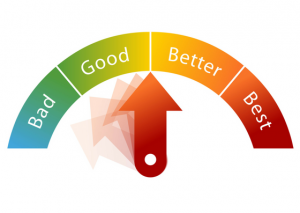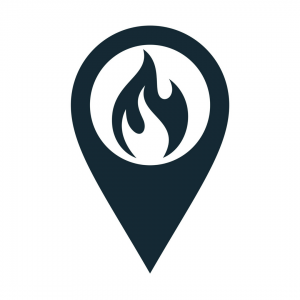 Are Heat Maps a Must-Have Marketing Tool?
Are Heat Maps a Must-Have Marketing Tool?
There are a number of different analytics tools you can implement to understand your website’s visitors, like Google Analytics. Whilst Google Analytics is an insightful tool, it doesn’t show you how people are behaving once they’ve clicked on a link. Among popular web analytics tools are heat maps, which software like Hotjar offer.
What Are Heat Maps?
Heat maps record the movement of visitors on your website by tracking their mouse movements on web pages. Heat maps use a colour coded system to visually highlight areas of your page that get the most attention. Although all heat maps are not the same, they typical show you:
- – Areas where visitors like to hover over
- – Areas of a page that get the most clicks
- – Areas that do not get a lot of attention
- – Where people scroll to on a page
- – Areas where people stop scrolling
- – Specific parts of a page where visitors tend to focus on
So, you’ve got all this data at your fingertips and you know how your audience are interacting with your website. But it’s what you do with the data that is most important. Knowing what your audience do isn’t enough – you need to work at amending your website (whether that be the format, design, content etc) and look to improve their interaction. Simply changing a few sections of your website could lead to more leads, conversions and sales.
Why Heat Maps Can Help Your Business
They Show You Where Visitors Click
Heat maps highlight where users are clicking on your website. You can see what parts of your website visitors are genuinely interested in. Heat maps make it simple for you to recognise what feature, content or service on your website customers truly find useful, so you can incorporate more of what’s popular into your website.
Know What Your Audience Are Not Interested In
It’s equally as important to know what your audience don’t care about as it is to know what they like.
Consumers might be missing important information, so you can rearrange your content and place vital information in places they will be more likely to see it.
If you notice visitors are rarely paying attention to a certain part of your page, you may want to consider de-cluttering and removing unserviceable information.
You Can Push Attention to Important Information
Heat maps can suggest where the best and worst areas of your website to include content. for example, visitors may hover on the top of your page, so you know that’s where your key points must be. By featuring the main points of your page in a place where users are most likely to engage with it, you’ll be upping your chances of conversions. Remember, it’s good practise to include a clear CTA button (call-to-action) to encourage the conversions.
Equally, you can see where visitors are losing interest. For example, if most people are dropping off 2/3 into your post, you should consider altering the content or structure.
To Conclude …
Your heat map can assist you in determining the direction your website needs to go. Since you can see what’s generating attention and what parts are failing to grasp interest, you can see what changes you need to make to enhance your customer’s experience.
About the author:
Marie Harwood is a Digital Marketing Assistant at Different Gravy Digital, Hale, Cheshire.
Different Gravy Digital are a full service Digital Marketing Agency operating in the Hospitality & Leisure, Financial Services, Legal & Property sectors. Products and services range from; 3D & 360° Tours, Website Design & Build, Social Media, Video Production, Search Engine Optimisation (SEO), Content Creation, Email Marketing, Online Feedback / Review Systems and Paid Advertising (Google, Bing and Social Media).
Contact Details:
marie@differentgravydigital.co.uk
0161 706 0004
120a Ashley Road, Hale, Altrincham, Cheshire, WA14 2UN